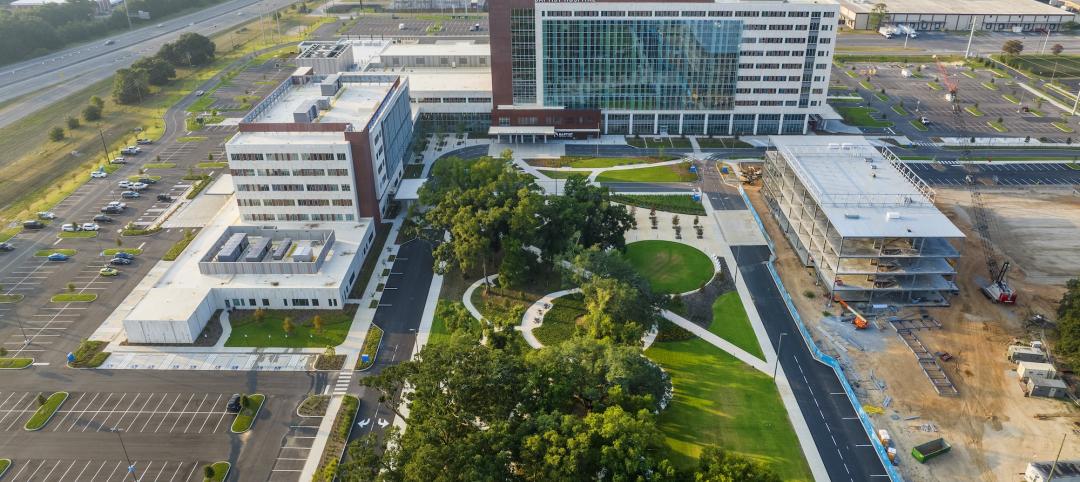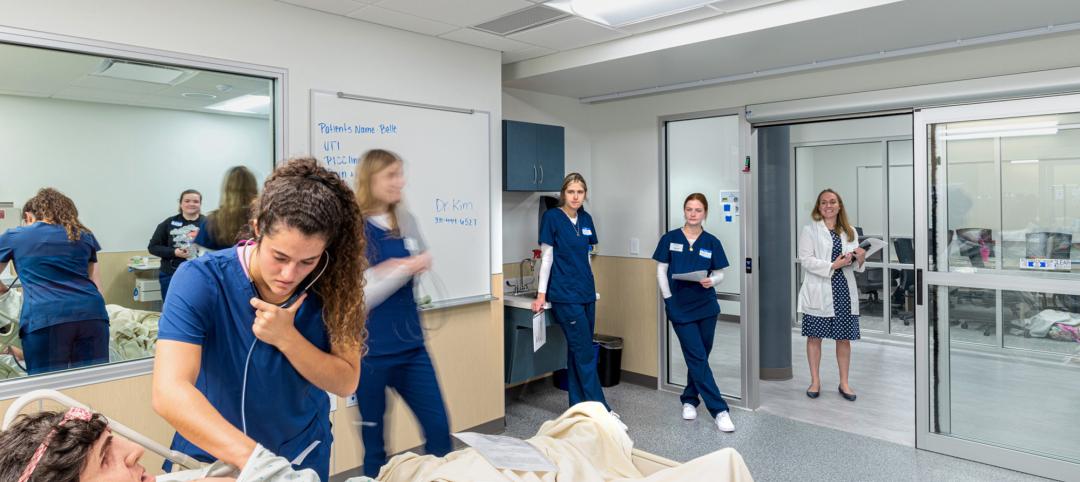Greenwich, Conn.– Back in 1997, when Greenwich Hospital broke ground on a new building, the plan was to build it in two phases, a concept that meant rethinking the installation of two large steam boilers.
“Space was at a premium since the sterilization facility adjacent to the boiler plant required more space,” said Steven Slusarz, Greenwich Hospital’s Chief Plant Operator. “That meant the two large Cleaver-Brooks boilers that were part of the original plans no longer worked since they required a great deal of space for pulling tubes and general maintenance.” After much research the hospital purchased seven Miura EX-200 SGO Gas/Oil Series High Pressure Steam Boilers.
Now, more than 20 years later, the hospital has begun to replace their Miura boilers with the latest Miura boiler technology.
There were several reasons why Miura won out as the boiler of choice for Greenwich Hospital: Miura’s compact size, efficient operation, and lower emissions, since the decision makers at the time wanted the hospital to take the lead in building a green facility.
What today is referred to as “on-demand steam” really caught the attention of the Greenwich Hospital staff, since it was a relatively new innovation for the US market.
“What was especially exciting for the facility planners was that within a few minutes you were up to 100 psi,” said Slusarz. “Another major advantage was high and low fires, without a lot of modulation, so there wasn't as much fine tuning required, and you still had higher efficiency.”
When running a boiler facility at a Northeast hospital, “Efficient operation is critical,” said Slusarz. “The hospital’s steam demand fluctuates throughout the day, so sometimes we're only doing 1,000 pounds an hour, and we can quickly go up to 8,000-9,000 pounds an hour. Plus, with multiple Miura boilers, we are able to have more control on what we are delivering, while minimizing waste.”
Slusarz also said that the hospital went from regular number two heating oil to the ultra-low sulfur diesel. “We dialed in the boilers, which brought our emissions even further down,” he said. “We are running a very clean, efficient plant at Greenwich Hospital.”
Miura’s steam boilers, which are made in the company’s Rockmart, Ga., headquarters, gives Greenwich Hospital the capacity for sterilization, heat, hot water, humidification and other requirements, while using less fuel and producing fewer emissions than traditional boilers.
UPGRADING TO THE NEWEST GENERATION OF BOILERS
Today, five of the original seven Miura boilers remain operational as the hospital upgrades to new Miura boilers.
“We replaced the two EX-200s from our original seven with EX-100s,” said Slusarz. “The main reason was that on the days when we're really not using a large amount of steam, it gives the operator greater options. Plus, our boiler room is designed with two rows of boilers; three on one side and four on the other. This gives the operator a chance to shut down one whole side for maintenance, and still have redundancy on the line.”
Miura’s modular approach also makes it easy to achieve an N+1 system, a redundancy required for hospitals that enhances overall reliability, since users never sacrifice production due to annual inspections.
“With Miura, everything is external,” said Slusarz. “You don't have to remove tons of covers and setup rigging. For our annual inspection, when the state requires us to pull the burner assemblies out, it's relatively easy. Slusarz said that it is usually a one-person job.
“One of the features that stands out with Miura boilers is the compact footprint,” said Slusarz. “Not only does it save us costly space, but you can walk around these boilers, which is a tremendous advantage.”
Miura’s compact size has also been a major advantage as the hospital continues to replace their boilers with the latest generation of Miura.
“Because we're a hospital, you can never have enough elevators, bathrooms, or closets, so Miura’s footprint is extremely beneficial to us,” said Slusarz. “When it comes time to replace them, we can get them in and out using simple rigging, versus having to take a whole side of a building out to replace a boiler. That’s a big deal.”
Operationally, the hospital’s Siemens BAS system is tied into the boiler, allowing Slusarz and his team to “see exactly what’s going on at any given time and make adjustments accordingly.”
MONITORING THE BOILERS
Miura’s EX Gas/Oil Series High Pressure Steam Boiler minimizes carryover and produces 99%+ dry saturated steam in less than 5 minutes from a cold start. Faster start-up means less fuel used, greater savings, and more responsible use of precious natural resources.
Available in 100HP, and in 50HP increments up to 300HP models, the EX Series utilizes vertical water tubes in a circular array. Both headers of each series are encased in a castable refractory with only the tubes exposed to flame and/or combustion gases. The upper header is attached to the lower header only by the tubes. As the tubes expand and contract, the headers float up and down accordingly.
The “floating header” concept allows for even thermal expansion of the tubes, therefore reducing stress points within the boiler. The “leaky tube” problems associated with firetube and bent watertube designs have been eliminated.
Having already replaced two boilers, Greenwich Hospital plans to replace at least one of their original five remaining boilers each year. “We want to bring everything up to date and try to stay a little bit ahead of the curve,” said Slusarz.
Greenwich Hospital, part of Yale New Haven Health, has been recognized for clinical excellence, patient satisfaction, technological innovations, medical advancements, and community involvement, including the 2017 Guardian of Excellence Award for outstanding patient experience in inpatient services, which the hosptial won for the second year in a row.
About Miura Boiler: Miura Boiler was founded in 1927 and has grown to become one of the largest industrial steam boiler manufacturers in the world. In 2009, Miura opened a new U.S. manufacturing facility in Rockmart, Ga. For more information in the U.S.: 1-888-309-5574; in Canada call 1-800-666-2182. www.miuraboiler.com.
Related Stories
Giants 400 | Jan 15, 2024
Top 130 Hospital Facility Architecture Firms for 2023
HKS, HDR, Stantec, CannonDesign, and Page Southerland Page top BD+C's ranking of the nation's largest hospital facility architecture and architecture engineering (AE) firms for 2023, as reported in the 2023 Giants 400 Report.
Healthcare Facilities | Jan 7, 2024
Two new projects could be economic catalysts for a central New Jersey city
A Cancer Center and Innovation district are under construction and expected to start opening in 2025 in New Brunswick.
Designers | Jan 3, 2024
Designing better built environments for a neurodiverse world
For most of human history, design has mostly considered “typical users” who are fully able-bodied without clinical or emotional disabilities. The problem with this approach is that it offers a limited perspective on how space can positively or negatively influence someone based on their physical, mental, and sensory abilities.
Healthcare Facilities | Dec 19, 2023
A new hospital in Duluth, Minn., is now the region’s largest healthcare facility
In Duluth, Minn., the new St. Mary’s Medical Center, designed by EwingCole, is now the largest healthcare facility in the region. The hospital consolidates Essentia Health’s healthcare services under one roof. At about 1 million sf spanning two city blocks, St. Mary’s overlooks Lake Superior, providing views on almost every floor of the world’s largest freshwater lake.
Healthcare Facilities | Dec 7, 2023
New $650 million Baptist Health Care complex opens in Pensacola
Baptist Health Care’s new $650 million healthcare complex opened recently in Pensacola, Fla. Featuring a 10-story, 268-bed hospital, the project “represents the single-largest investment in the healthcare history of northwest Florida,” said Gresham Smith project executive Robert “Skip” Yauger, AIA, LEED AP. The 602,000 sf Baptist Hospital is equipped with a Level II trauma center that provides 61 exam rooms and three triage areas.
Engineers | Nov 27, 2023
Kimley-Horn eliminates the guesswork of electric vehicle charger site selection
Private businesses and governments can now choose their new electric vehicle (EV) charger locations with data-driven precision. Kimley-Horn, the national engineering, planning, and design consulting firm, today launched TREDLite EV, a cloud-based tool that helps organizations develop and optimize their EV charger deployment strategies based on the organization’s unique priorities.
Healthcare Facilities | Nov 3, 2023
The University of Chicago Medicine is building its city’s first freestanding cancer center with inpatient and outpatient services
The University of Chicago Medicine (UChicago Medicine) is building Chicago’s first freestanding cancer center with inpatient and outpatient services. Aiming to bridge longstanding health disparities on Chicago’s South Side, the $815 million project will consolidate care and about 200 team members currently spread across at least five buildings. The new facility, which broke ground in September, is expected to open to patients in spring 2027.
Sponsored | | Oct 17, 2023
The Evolution of Medical Facility Security
As the healthcare system grows, securing these facilities becomes ever more challenging. Increasingly, medical providers have multiple facilities within their networks, making traditional keying systems and credentialing impractical.
Healthcare Facilities | Oct 11, 2023
Leveraging land and light to enhance patient care
GBBN interior designer Kristin Greeley shares insights from the firm's latest project: a cancer center in Santa Fe, N.M.
Healthcare Facilities | Oct 9, 2023
Design solutions for mental health as a secondary diagnosis
Rachel Vedder, RA, LEED AP, Senior Architect, Design Collaborative, shares two design solutions for hospitals treating behavioral health patients.
















